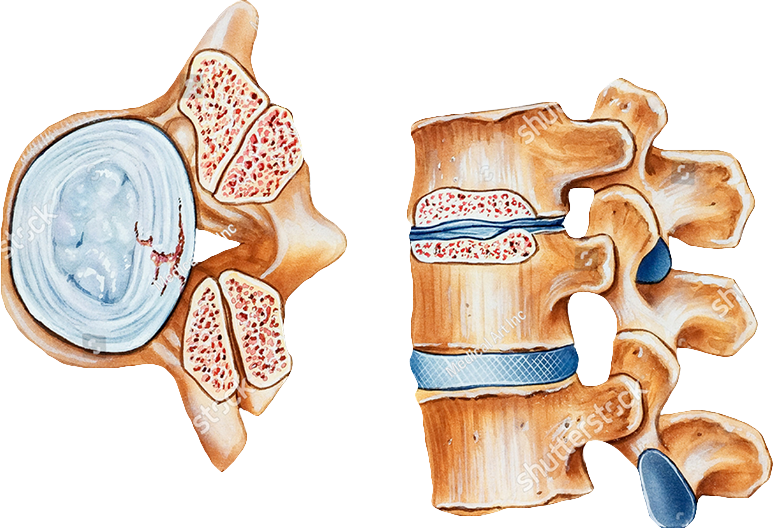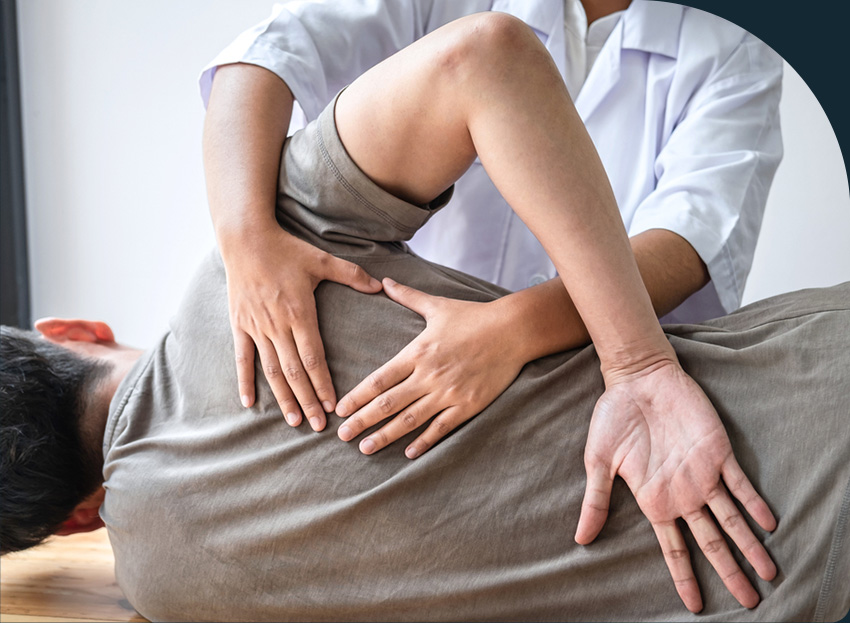Your vertebrae create a tunnel, known as the spinal canal. Your spinal cord, which is a bundle of nerves, runs through this canal. When the spinal canal narrows, which is referred to as spinal stenosis, it decreases the amount of room your spinal cord and the nerves that branch off of it have. The tightening of the space can irritate or put pressure on the spinal cord and nerve roots, leading to back pain, sciatica or neck pain.

The Symptoms of Spinal Stenosis
Some of our Long Island spinal stenosis patients have no symptoms at all. For those with symptoms, they vary depending on the area of the spine affected and can include:
- Back pain and/or neck pain, ranging from mild to severe
- Tingling or numbness in an arm, leg, foot or hand
- Weakness in an arm, leg, foot or hand
- Difficulty walking or standing for long periods
- Problems with balance
What Causes Spinal Stenosis?
Spinal stenosis typically happens gradually over time and is most common in people over the age of 50.
The condition is often caused by:
- Bone spurs due to osteoarthritis
- The thickening of ligaments that can occur with age
- Injury to the spine
- Spondylolisthesis (slipped disc/vertebrae)
- Herniated discs
- Tumors


How is Spinal Stenosis Diagnosed?
Discussion With Dr. Choi
Dr. Choi will start your consultation at Spine Medicine & Surgery of Long Island by talking with you about your symptoms, the triggers for your pain and your medical history.
Exam
Next, Dr Choi will perform a comprehensive physical examination. He’ll assess your spine and may ask you to bend in different directions to see if certain positions cause discomfort.
Imaging Tests
Depending on your symptoms, Dr. Choi will likely order one or more imaging tests, such as:
- An X-Ray – This will allow Dr. Choi to determine if bone spurs are causing your spinal stenosis.
- An MRI – An MRI can identify damage to discs and ligaments and help detect tumors.
- A CT Scan – A CT scan will capture images of the spinal cord and nerves and help pinpoint bone spurs, herniated discs or tumors.

Spinal Stenosis Treatment
When you visit us for spinal stenosis treatment in Long Island, Dr. Choi will create a personalized plan tailored to your needs. Your options will depend on how severe your symptoms are and the extent of your condition. Early diagnosis and treatment can slow or even stop the progression of spinal stenosis.
Treatment may involve:
- Medications – Medications, including pain relievers, anti-seizure medications and antidepressants can reduce the symptoms of spinal stenosis.
- Physical Therapy – A physical therapist will guide you through exercises and stretches to help you regain your strength, balance and flexibility. They may also use techniques like massage to loosen up stiff joints if they’re contributing to your symptoms.
- Steroid Injections – Steroid injections are a minimally invasive way to temporarily reduce inflammation and pain.
- Surgery – Surgery for spinal stenosis is usually recommended only after the more conservative treatments fail. If surgery is necessary, as a minimally invasive spine surgeon, Dr Choi uses the latest technology and techniques for a safer procedure and shorter recovery period.
Less Pain, More Living
Find out how we can help you achieve freedom from pain. To get started, schedule a consultation with our Long Island spine surgeon today!



